"We will not forget your faces or your stories. Please know that all of your efforts will make a contribution to making [the regulatory review] process go smoother when a new treatment comes to the FDA to be reviewed."
- Dr. Larry Bauer, regulatory scientist, FDA
Optimizing the Review & Approval Process for DM Therapies
As many of our community members know, MDF held the first myotonic dystrophy (DM) Patient-Focused Drug Development (PFDD) meeting with key senior leaders from the Food and Drug Administration (FDA) as part of the 2016 MDF Annual Conference. We designed the meeting to build on the work MDF has been conducting with the FDA to define and optimize the regulatory pathway for potential DM therapies.
The DM PFDD Meeting – Why Do It?
The DM PFDD meeting, which was the first Externally-Led PFDD Meeting sanctioned by the FDA as well as the first PFDD meeting focused on DM, was conceived to follow on these earlier meetings, and particularly the full-day workshop in 2015, by moving from reports and discussion from regulators, academic researchers and industry professionals to insights and information provided directly by people living with DM and their caregivers. Decision-makers are increasingly realizing that the voice of the patient is a critical element in understanding how to develop and approve therapies that provide clinically-meaningful benefit to those living with a particular disease. Without patient insights, the FDA’s ability to assess the benefits and risks of a particular therapy, and its ability to provide real benefit to patients, is significantly impaired.
Laying the Groundwork – Earlier DM FDA Meetings
Earlier MDF meetings in 2014 and 2015 focused on the status of biomarker and endpoint development, insights and challenges with regard to DM clinical trial design and other key regulatory questions. The full day regulatory workshop MDF hosted in September 2015 included presentations from leading DM clinicians and researchers, and FDA representatives in divisions and offices that impact the regulatory pathway of DM therapies, including the Study Endpoints Team, the Office of New Drugs, the Office of Drug Evaluation 1 - Division of Neurology Products, which will be in charge of the actual review of potential DM therapies, and a number of other functions in the Center for Drug Evaluation and Research (CDER) at FDA.
The Largest PFDD Meeting Ever
Well over 200 community members, industry professionals, academic researchers and FDA representatives attended the meeting live and via the live stream MDF provided. FDA leadership including Dr. Janet Woodcock, who oversees all drug evaluation and research at FDA as the Director of CDER; Dr. William Dunn, who is the Director of the Office of Drug Evaluation 1 – Division of Neurology Products, the division that will review all DM therapies; Dr. Jonathan Goldsmith, Associate Director of the Rare Diseases Program, Office of New Drugs, CDER/FDA; Dr. Larry Bauer, a regulatory scientist in the Rare Diseases Program; and a number of additional representatives from the Office of Health and Constituent Affairs, the Office of Translational Sciences, the Study Endpoints team, and others also attended.
DM PFDD Meeting – Engaging the Audience
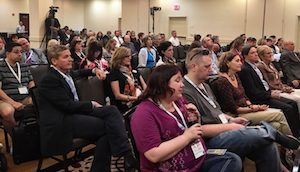 MDF held the DM PFDD meeting on Thursday, September 15, 2016 from 1-5 PM ET in a conference hotel located near the FDA campus. James Valentine, a former FDA professional who helped launch the PFDD process at FDA and who now works in private practice advising industry and others in the therapy development arena, facilitated. The meeting began with a review of disease manifestations and a clinical overview from Dr. Charles Thornton of the University of Rochester. We then moved to audience polling to understand the demographics of those attending the meeting, either live in the conference room or via live stream.
MDF held the DM PFDD meeting on Thursday, September 15, 2016 from 1-5 PM ET in a conference hotel located near the FDA campus. James Valentine, a former FDA professional who helped launch the PFDD process at FDA and who now works in private practice advising industry and others in the therapy development arena, facilitated. The meeting began with a review of disease manifestations and a clinical overview from Dr. Charles Thornton of the University of Rochester. We then moved to audience polling to understand the demographics of those attending the meeting, either live in the conference room or via live stream.
Attendees provided information on their diagnosis (DM1, DM2, CDM), whether they were a patient or caregiver, when they were diagnosed, first experienced DM symptoms, their age range, etc. MDF has no information on who the specific attendees were and how they voted; however the demographic information allows us to tie specific polling responses to the demographic particulars of participants - for instance patients versus caregivers, DM1 versus DM2 respondents and much more. Only patients and caregivers were allowed to vote during the polling sessions; academic, industry and federal agency attendees were not.
All polling results displayed immediately on the screen at the close of polling for each question, so that attendees in the room and participating remotely could see how the full audience was voting, and how their answers and experiences aligned with others.
Living with DM – What the FDA Wants to Know
The first panel presentation, entitled Living with DM, took attendees to the heart of the meeting agenda. This session began with remarks from four panelists selected by MDF to represent key elements of the DM community, including patients with DM1 and DM2, caregivers, individuals with congenital or childhood-onset DM, etc.
The Living with DM panel questions were:
- What 1-3 symptoms of DM have the most significant impact on your life?
- How do they affect your life on a typical day? On your worst day?
- Are there specific activities that are important to you that you can no longer do or do as well because of your condition?
- How have your symptoms changes over time?
MDF panelists for panel one included Glen Wiggans, Athens, GA; Judy Marks, Raleigh, NC; Lee Baker, Roanoke, VA; and Sarah Clarke, New York, NY. Each panelist gave five minutes of prepared remarks responding directly to the questions posed to the Living with DM panel, providing personal stories and examples that painted compelling and vivid pictures of life with DM1, DM2 and the experience of caregiving for family members who live with the disease. Their stories were factual, detailed, moving and sometimes funny, and added immeasurably to the perspective and understanding of those in the room who were there to learn.
Panel One Audience Input
Attendees in the room and participating via live stream also responded to the panel one questions via live and remote polling, and via moderated audience discussion. The audience polling and moderated discussion provided additional voices and perspectives to the FDA and enabled the facilitator to probe more deeply around topics highlighted as particularly significant by the polling responses.
Dr. Janet Woodcock, MD, the head of research and drug evaluation at FDA and a strong proponent of including the patient voice in drug development and evaluation, addressed attendees, congratulating MDF on hosting the first Externally-Led PFDD meeting and outlining additional opportunities for productive patient advocacy engagement in the regulatory environment.
More Community Insights – Challenges of DM, a Short Film
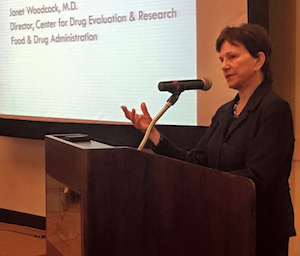 A picture (or short film) is often worth a thousand words, so MDF screened Challenges of DM, a short film we created specifically for the FDA as an educational tool. The film included short interviews with DM community members around the country who do not attend MDF events, and featured voices and experiences we felt were critical to creating a holistic picture of the DM disease experience.
A picture (or short film) is often worth a thousand words, so MDF screened Challenges of DM, a short film we created specifically for the FDA as an educational tool. The film included short interviews with DM community members around the country who do not attend MDF events, and featured voices and experiences we felt were critical to creating a holistic picture of the DM disease experience.
Panel Two – Current and Future Treatments
Four new panelists presented on strategies and interventions currently used in their families to manage disease symptoms, how effective or ineffective these are, drawbacks and side effects, and what they would most like to see from future therapies.
Panel Two questions included:
- What current treatments or therapies do you use for symptom management?
- How well are these therapies or treatments working?
- What are the downsides, if any, to these treatments or therapies?
- What do you want from an ideal treatment?
Panelists included Pat Dinsmore, WA, DC; Suzette Ison, Morristown, IN; Joachim Boekelmann, Princeton, NJ; and Tom McPeek, Chillicothe, OH. Their presentations highlighted the significant lack of effective treatments and interventions available to people living with DM and the importance of finding and approving effective therapies soon. Audience members responded to the panel two questions during the polling session and moderated discussion, rounding out DM community perspectives regarding disease management strategies and community hopes regarding eventual therapies.
FDA Feedback – Well Done
Dr. Jonathan Goldsmith, MD, who is Associate Director of the Rare Diseases Program in the Office of New Drugs, CDER, FDA, wrapped up the meeting by reflecting on what he, as an FDA participant and listener, had heard from the panelists and attendees. He touched on the very real need that exists for effective therapies, and the profound and ongoing struggles families with DM live with every day. Dr. Goldsmith demonstrated, through his summary remarks, that DM is understood to be a real and specific disease for FDA attendees, and not just "muscular dystrophy".
Perhaps equally compelling, MDF received an email from Dr. Larry Bauer the next day, in which he congratulated MDF on the quality and scope of the DM PFDD meeting, stating:
"Please know that all of the FDA attendees were enlightened, deeply moved and educated about the realities of living with myotonic dystrophy. We will not forget your faces or your stories. The meeting also made it extremely clear how much a treatment is needed for DM. Please know that all of your efforts will make a contribution to making that process go smoother when a new treatment comes to the FDA to be reviewed."
Our Thanks to You
We at MDF would like to thank all our community members who made time to attend the meeting, either in person or via live stream, and participate in the polling that created specific feedback for the FDA. We are incredibly grateful to the panelists who spent significant time writing and editing their remarks, participating in practice sessions and helping represent the DM community to the FDA.
There Is Still Time to Share Your Thoughts
MDF is currently assessing the polling results and analyzing the responses received against the demographic information provided, to understand better how, for instance, DM1 versus DM2 patients responded to key questions, how caregiver input differed from patient input, any interesting regional differences, etc. We will create a Voice of the Patient Report this fall, which we will deliver to the FDA for use in future drug review processes. The Voice of the Patient Report will be critical content the Neurology Review division will take into account when assessing the benefits and risks of specific drugs, and whether they will provide therapeutic benefits that are meaningful to patients.If you were unable to participate via live stream or in the meeting on September 15th, you can still provide answers to the questions posed to panels one and two. MDF will accept emailed or telephone responses to the questions until 5 PM PT Saturday, October 15th, 30 days after the DM PFDD meeting.
Questions?
Contact MDF via email or at 415-800-7777.
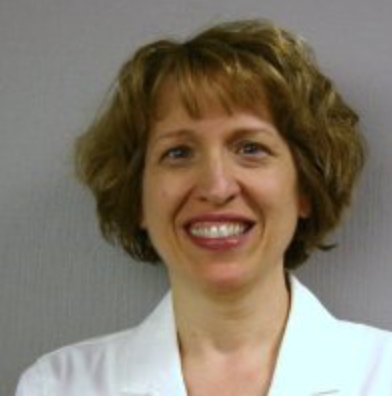 Carolyn Valek is one of MDF’s original Phone Buddies. She uses her experience as a patient advocate to dispense critical information to those in need. Her warm personality and deep concern for the community help newcomers quickly feel at home.
Carolyn Valek is one of MDF’s original Phone Buddies. She uses her experience as a patient advocate to dispense critical information to those in need. Her warm personality and deep concern for the community help newcomers quickly feel at home.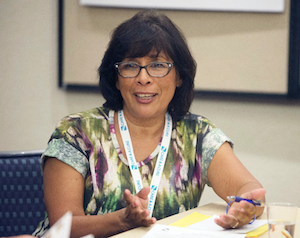 Loraine Dressler’s dedication to supporting the DM community and her glowing positivity make her an inspiration to others. Loraine runs MDF’s Orange County support group and will also be participating in MDF’s Virtual Caregivers Support Group.
Loraine Dressler’s dedication to supporting the DM community and her glowing positivity make her an inspiration to others. Loraine runs MDF’s Orange County support group and will also be participating in MDF’s Virtual Caregivers Support Group.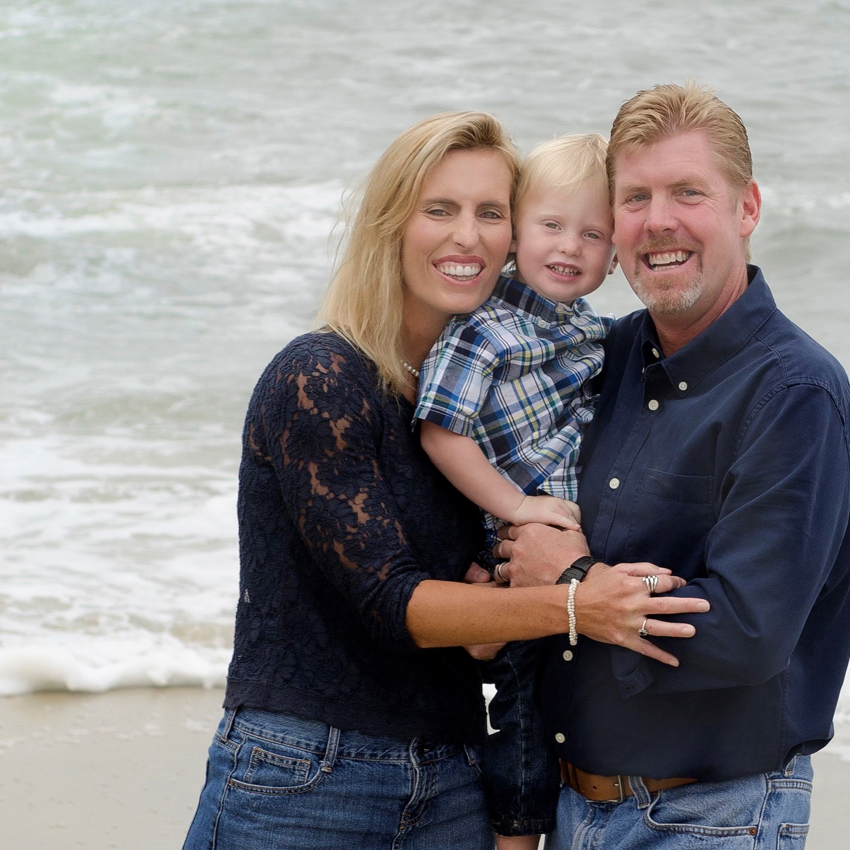 Taylor and Eric Jensen are a formidable grassroots fundraising team. They have turned their annual friends and family crawfish boil into a much anticipated and highly successful community celebration to support Care and a Cure. “Pinching Tails for a Cure,” has raised more than $110,000 since it began in 2013.
Taylor and Eric Jensen are a formidable grassroots fundraising team. They have turned their annual friends and family crawfish boil into a much anticipated and highly successful community celebration to support Care and a Cure. “Pinching Tails for a Cure,” has raised more than $110,000 since it began in 2013.
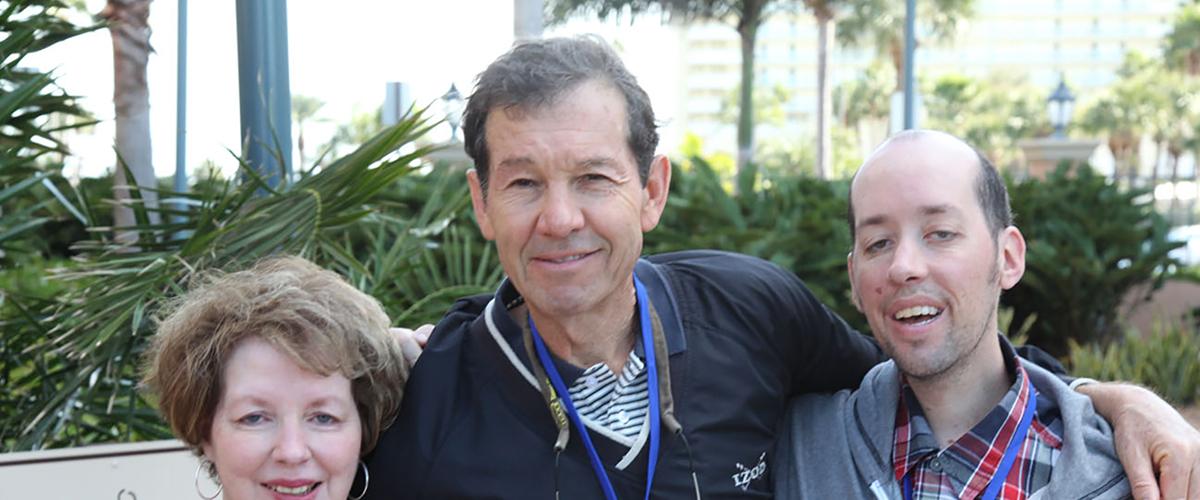
 MDF held the DM PFDD meeting on Thursday, September 15, 2016 from 1-5 PM ET in a conference hotel located near the FDA campus.
MDF held the DM PFDD meeting on Thursday, September 15, 2016 from 1-5 PM ET in a conference hotel located near the FDA campus.  A picture (or short film) is often worth a thousand words, so MDF screened
A picture (or short film) is often worth a thousand words, so MDF screened 
